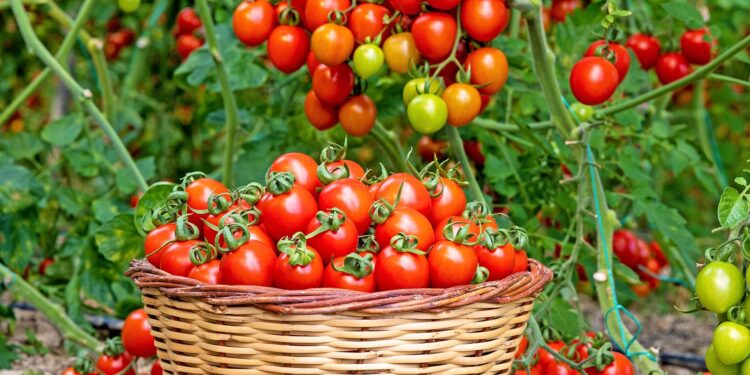When it comes to tomatoes, many might immediately think of Italy’s sun-drenched fields or the sprawling farms across the United States. However, the title of the world’s largest tomato producer belongs to a different country altogether. In a surprising revelation that challenges common assumptions, recent agricultural data shows that this unexpected nation leads global tomato production, reshaping our understanding of the industry’s landscape. This article delves into the factors behind this country’s tomato dominance and what it means for consumers and markets worldwide.
Tomato Production Surges in Unexpected Regions Revealing New Global Farming Trends
Recent agricultural reports unveil a dramatic shift in global tomato production dynamics, spotlighting countries previously not associated with large-scale tomato farming. Nations in Southeast Asia and parts of Africa are emerging as formidable contenders, leveraging innovative cultivation methods and favorable climatic conditions. These regions have successfully combined traditional farming knowledge with modern technology, resulting in an unexpected surge that challenges the long-standing dominance of Mediterranean and North American producers.
Key factors driving this transformation include:
- Advanced irrigation systems that optimize water usage in arid zones
- Adoption of hybrid tomato varieties tailored for local environmental conditions
- Government incentives promoting export-oriented agriculture
- Investment in cold-chain logistics, enhancing the shelf life of farm produce
These developments not only diversify the global tomato supply but also introduce new economic opportunities for farming communities in emerging markets. Below is a comparative snapshot illustrating the top five global tomato producers by volume in 2023:
| Rank | Country | Production (Million Metric Tons) | Primary Production Region |
|---|---|---|---|
| 1 | China | 65 | Shandong, Henan |
| 2 | India | 25 | Andhra Pradesh, Maharashtra |
| 3 | Turkey | 13 | Marmara, Aegean |
| 4 | United States | 12 | California, Florida |
| 5 | Egypt | 8 | Delta, Nile Valley |
Innovative Agricultural Practices Driving Growth Beyond Traditional Tomato Powerhouses
Across the globe, a wave of agricultural innovation is transforming tomato cultivation, pushing production frontiers far beyond the familiar territories of Italy and the United States. Farmers in emerging markets are embracing precision farming techniques, including drone surveillance, soil moisture sensors, and AI-driven climate modeling, which optimize resource use and enhance crop yields. This shift is backed by significant investments in controlled-environment agriculture such as hydroponics and vertical farming, enabling year-round tomato production unaffected by seasonal limitations. These advancements not only increase output but also improve sustainability by reducing water consumption and minimizing pesticide reliance.
Several nations that were once minor players are fast becoming tomato giants through strategic adoption of these technologies. Below is a snapshot comparing key innovative practices that have accelerated growth in leading emerging producers:
| Country | Key Innovation | Impact on Yield | Environmental Benefit |
|---|---|---|---|
| Mexico | Smart Irrigation Systems | +30% | Water Savings 40% |
| China | Vertical Farming | +50% | Reduced Land Use 70% |
| Turkey | Integrated Pest Management | +25% | Pesticide Reduction 60% |
- Data-driven agriculture: Farmers analyze real-time data to predict disease outbreaks and optimize harvest schedules.
- Hybrid seed development: New varieties boast higher resistance to pests and tolerate extreme weather conditions.
- Renewable energy integration: Solar-powered greenhouses are cutting operational costs and carbon footprints.
Strategies for Supporting Sustained Tomato Industry Expansion in Emerging Markets
To foster robust growth in emerging tomato markets, investments must focus on enhancing local infrastructure and adopting modern agricultural technologies. Facilitating access to quality seeds, efficient irrigation systems, and pest management tools can significantly increase yields while reducing environmental impact. Additionally, empowering smallholder farmers through training and cooperative initiatives enables knowledge transfer and improves market integration, creating sustainable income streams.
Key approaches include:
- Establishing cold storage and transport facilities to minimize post-harvest losses
- Promoting public-private partnerships for research on climate-resilient tomato varieties
- Supporting local processing industries to add value and extend shelf life
| Strategy | Projected Impact | Implementation Timeline |
|---|---|---|
| Access to Improved Seeds | +30% Yield Increase | 1-2 Years |
| Cold Chain Infrastructure | Reduce Losses by 25% | 3-5 Years |
| Farmer Training Programs | Enhanced Quality & Market Access | Ongoing |
To Conclude
As the global demand for tomatoes continues to rise, it’s clear that the traditional associations with Italy or the United States do not tell the full story of tomato production. This unexpected leader in tomato cultivation underscores shifting agricultural trends and highlights the importance of looking beyond conventional narratives. As consumers and industry experts alike take note, the dynamics of global food production remain more complex and fascinating than ever.
















